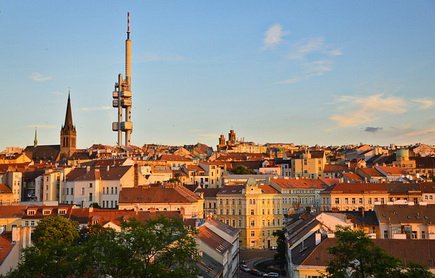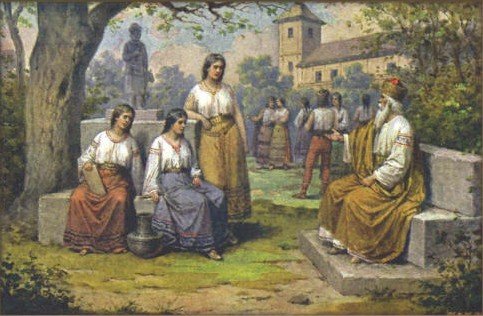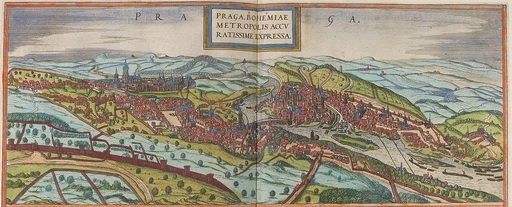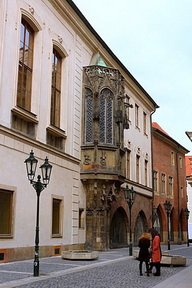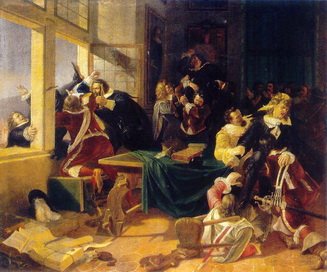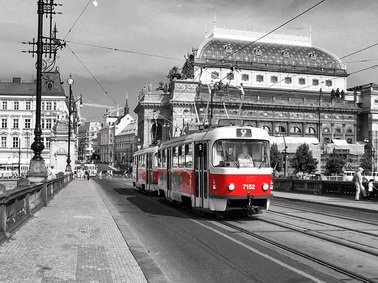A
beautiful, old legend says that Prague was created by a wise princess called Lěbuse. She was a daughter to a sage – Krok, who is said to govern these territories around VII-VIII centuries AC. It was a patriarchal society, but Lěbuse was smart. She chose a farmer to become her husband and thus he became the king Přemyst the Ploughman. The Přemyslid Dynasty was created, if you visit Vysehrad today, you will find a statue of the famous couple there. The place is said to exist then, but the stone castle was built in the X century. The terrain next to the Vltava was quite popular. Christianity was slowly growing, monasteries were founded, and the prosperity of the area attracted the new settlers.
Soon after the first castle, the second one was founded. It was on the opposite bank of the river, also on a hill. A wooden stronghold was built – with some quarters for the prince (they slowly turned into a palace) and a few churches.
Somehow this one became more practical and famous. In the XII century Přemyst Ottokar I rebuilt Hradcany in stone. A true palace was formed. Kosmas the chronicler writes that there was a huge marketplace nearby. It was situated in the Old Town Square of today. The Czech people like to nickname it “Staromak” – it is the favorite place to meet, both for them and for the tourists. It is here that every full hour you can see the spectacle of the astronomical cock Orloy. – a XV century craftsmen’s masterpiece.
But let’s go back in time one century. Charles IV was a king then – half prince of Bohemia and half of Luxembourg and the Holy Roman Empire.
He is one of the most famous monarchs of the XV century. It is him, that gave the name to the bridge tourists love so much. It is said that the mortar was made from eggs delivered from all over the country. The king himself put the first stone at dawn.
Charles w changed Prague completely. He started the construction of the St. Vitus Cathedral and he founded the University – the first one in these regions of Europe. He connected the old square with the new one in the New Town – now you know it as Wenceslas Square. Here, in 1918, independent Czechoslovakia was born. But we will get to it in a moment.
Back to the university…
Between 1409-1410 Jan Hus was its rector. He was also a priest and a professor. His teachings described a reality of the whole-powerful, corrupted church that governs everyone around them. They say he was the precursor of the Reformation. He was finally burnt as a heretic in Germany, and his remains ended up in the Rhine river. But the Czechia people remember, and they greet his statue every time they visit Staromak.
Not far from there stands the Bethlehem Chapel, where Hus was preaching in… Czech language!
After the decades of religious wars, the peace came alongside the new monarchs – the Habsburgs. It didn’t last long and soon Prague was rebelling against the Austrian rule. The city was punished. What’s more the great fire of 1541 didn’t help.
When king Rudolph I (XVI/XVII c.) decides that Prague would be his new capital, things change again. The city grows rapidly – it becomes a center for culture, knowledge, art, and entertainment. Hradcany Complex changes too. It became a true palace. Italian artists and architects come to work on it. The royal court comes with their art and painting collections, and by this – the exalted cultural taste. People get rich and they start to build bigger and better tenements for themselves. Buildings are even connected to the Vltava river and they have running water inside. The same water flows to the royal lakes. The gardens are created, and the Habsburgs can enjoy their strolls among fountains and bridges, and their new Summer Palace.
Some kings were not this generous. There were new rebellions against their rule. Their most notable horror was the public execution of 27 people in Old Town Square.
After the 30 Years war (XVI) a full-scale Germanisation started. Check language was forbidden – both schools and administration used German. Because of trade repressions, Prague turned into a provincial town. Mostly the churches were built then – to strengthen the catholic religion and by this the Austrian rule.
Wars ravaged Europe in the XVII-XVIII centuries. Even the Swedes came to the Bohemian Kingdom, but it was the Prussians that conquered Prague. All this commotion didn’t interrupt the city’s development. In 1784 four smaller cities joined the agglomeration. A new district also appeared. Soon after – came the Industrial Revolution. Czech culture started to be rebuilt – National Museum and Theatre were created. The city walls were demolished because Prague needed new grounds to expand. Main Train Station and a smaller one in Letnie led passengers to the city and far from it. In 1891 the World Exposition took place – for this occasion the Petřin Tower was built. The wish of king Charles IV was still honored – it was instantly called the second Eiffel Tower.
The XX century, regardless of all that has happened is the era of success. Foreign, occupying forces leave and Czechoslovakia becomes an independent country. Prague is the capital, and it grows even more.
After the I World War the city turns into an Avant-garde hotspot. It invests into functionality and the future – an international airport in Ruzyně is opened. The city has more than one million citizens! It is the time the writer Franz Kafka depicts the wonders and horrors that happen around him. His presence in Hradcany makes the Golden Lane even more famous. His words go beyond time – recently another memoir of his person was added to the city – a mechanical, moving head of the author.
The II World War didn’t bring much destruction to the city… but it brought a lot to the Jewish and Gypsy population that lived here. Communism makes the ugly, concrete blocks appear in Prague. There is even a brief, Soviet occupation of the town.
People suffer and rebel with their characteristic, Czech stubbornness, and optimism.
In the meantime, the city welcomes the first cable cars and subway (called metro). The 70s are also the time of the first department stores. New roads, parks, Congress Centre, and characteristic by now – television tower of Žižkow, appear. In 1989 the Velvet Revolution marks the peak of people’s discontent with the communist rule. Out of the crowd comes Vaclav Havel who will soon sit in the presidential chair in Hradcany. After what seems like ages, two counties split, and Havel becomes the president of the Czech Republic. Prague turns into a city of tolerance and cultural events, loved by the filmmakers (e.g., Mission impossible, James Bond).
Princess Lěbuse once said that it would be a great town… Looking back at all the city’s stories, and comparing it with how it grew, you can agree with it wholeheartedly.
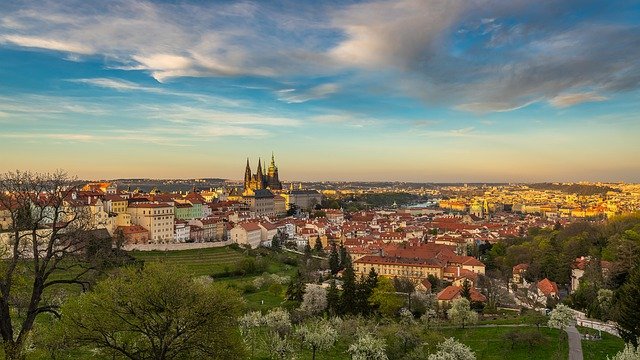
Enjoy sightseeing!
